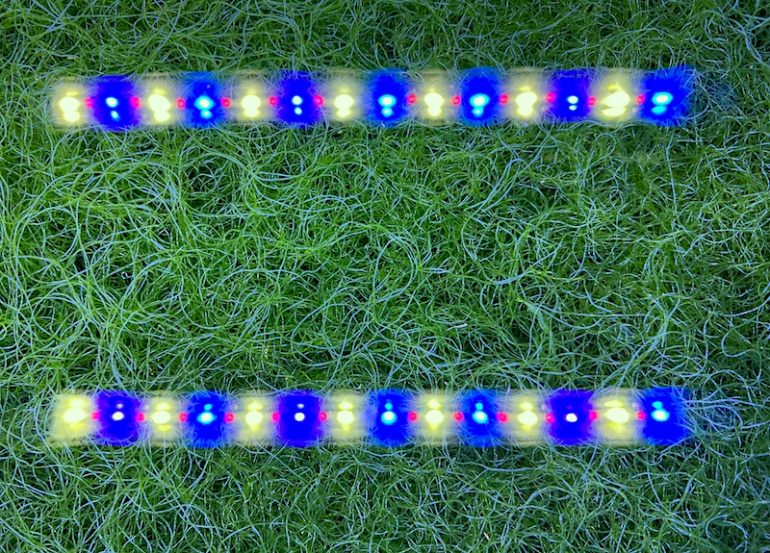A reef tank is different from other types of tanks in a lot of ways, with one of the biggest being that most reef tanks utilize a sump to hold the equipment and to add volume to the system. An adjunct to having a sump is that some of us now take this sump one step further and use the sump, or at least part of it as a refugium.
Interestingly the definition of a refugium is an area of isolation in which a population of organisms can survive through a period of unfavorable conditions. While this is in part true, this is not what we mean when we say our system contains a refugium. First, our refugia are only isolated in the context that they are separate from our main display tanks. Second the organisms that we keep in them are generally kept there as a means for keeping them from being consumed by the tank’s inhabitants and lastly, a refugia is usually used as a means for reducing nutrients.
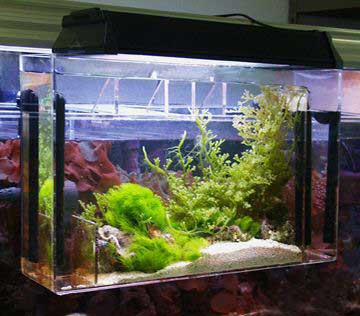
So what is the difference between a simple sump and a refugia? A sump is simply a tank isolated and usually below the main display tank that houses all of the equipment, skimmer, heater, media reactors, and pumps, that help to maintain the stability and conditions in the main display tank. The refugia is an add-on either within the sump itself or as an isolated section where live material is housed that in some way help to provide a benefit to the main display tank. The amount and type of live material can vary significantly depending on what is trying to be removed or added to the system. These can contain substrate, live sand, dead sand or “mud”, live rock, algae, either Caulerpa or Chaetomorpha, microfauna, and even corals like Xenia or clams. The pros and cons of each of these will be discussed below.
Miracle Mud
The first time I ever saw a refugia, it was not even called that then, was in 1996, when I visited Leng Sy at Ecosystem Aquariums and saw his “Miracle Mud” refugia system. The hobby had only recently shifted over to using protein skimmers, so I was shocked when I saw Leng’s well-stocked thriving system being run with only a refugia full of his miracle mud and Caulerpa. There was no mechanical, chemical or other types of filtration, only a large tank below his tank full of life. When I say life, in addition to the mud and Caulerpa, the refugia contained a wide variety of microfauna including amphipods, copepods, worms, and other organisms that thrived in the mud and on the Caulerpa.
While we did not know it at the time, this system was working on several levels to provide for the tank in ways that we are only coming to understand. The Caulerpa acted to remove nutrients like nitrate and phosphate, the mud slowly released trace elements into the system and the whole refugia acted as a breeding ground for microfauna the offspring of which washed into the tank helping to feed the fish and the corals. To this day, it is still one of the more impressive systems I have seen, especially considering how little technology it actually used.
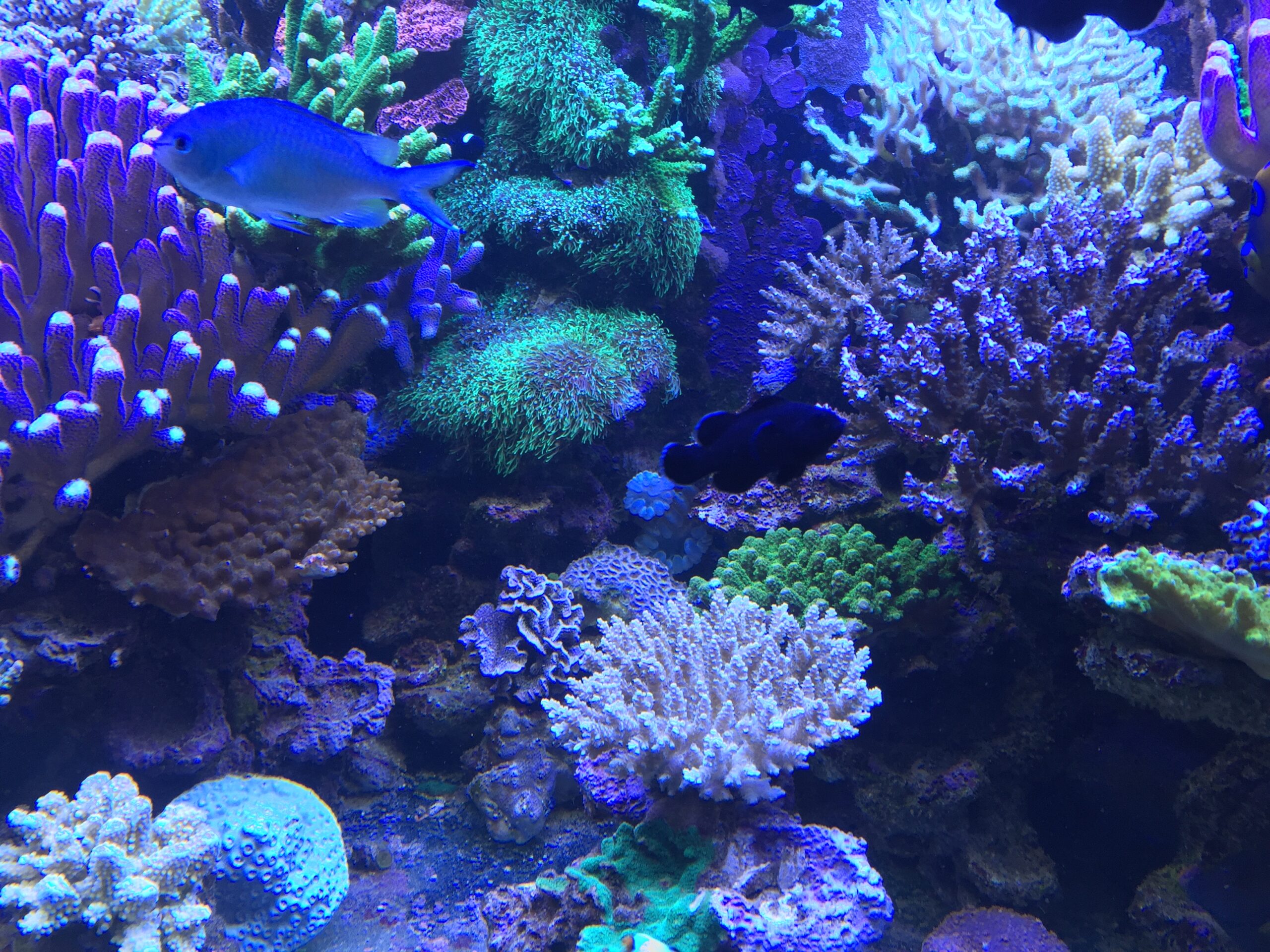
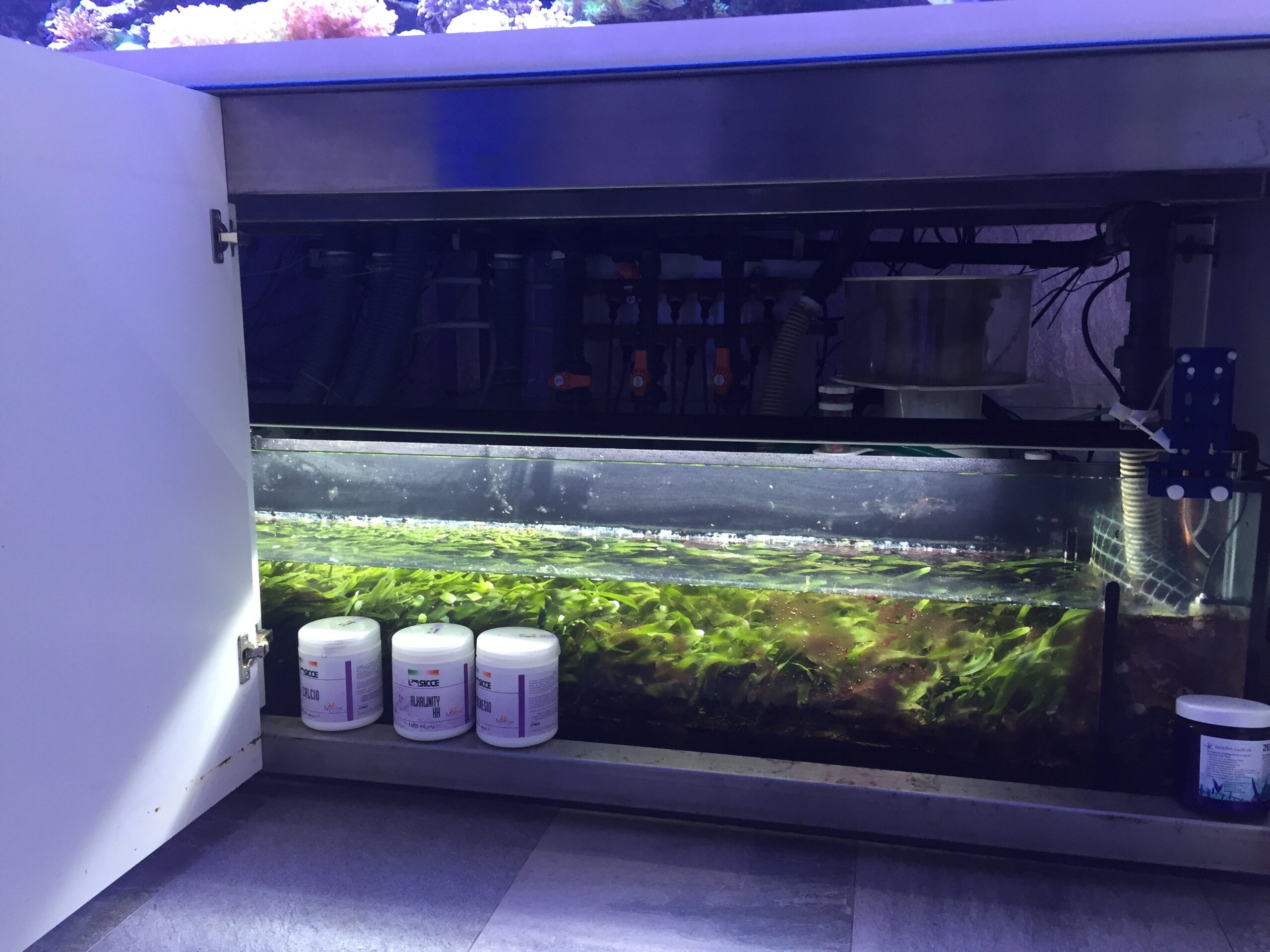
From this start, refugia have evolved into many things. Most use them as a home for algae of some type, either Caulerpa or Chaetomorpha, with the goal of using these plants as a means for removing excess nutrients like phosphate and nitrate. During the early years when this was the goal, most refugia tended to be very large with the lighting of the refugia being moderate at best. However, over time refugia have evolved so that they can now be much smaller, but with significantly stronger light, that can now be provided by LEDs. With this stronger light, it is now possible to have the algae grow much faster and hence remove more nutrients more efficiently using a smaller chamber. As a result, it is now more possible than ever to have a refugia be part of a sump even on a small system.
In addition to removing nutrients and adding microfauna it has now been hypothesized that when growing in optimum conditions the algae may also help to provide glucose and/or carbohydrates for the corals and other invertebrates to consume helping to provide a further nutritional benefit for the animals. This has yet to be proven, but it makes sense. Some other possible benefits of having a refugia full of algae is that in some instances the algae in the refugia, which is usually a higher-level algae, will outcompete the nuisance microalgaes in the system and thus help to keep the display tank cleaner. This may be true, but I have only seen it occur when the nutrients to feed the nuisance algae are in short supply, when there is an excess, the nuisance algae can still thrive even in the presence of a thriving refugia.
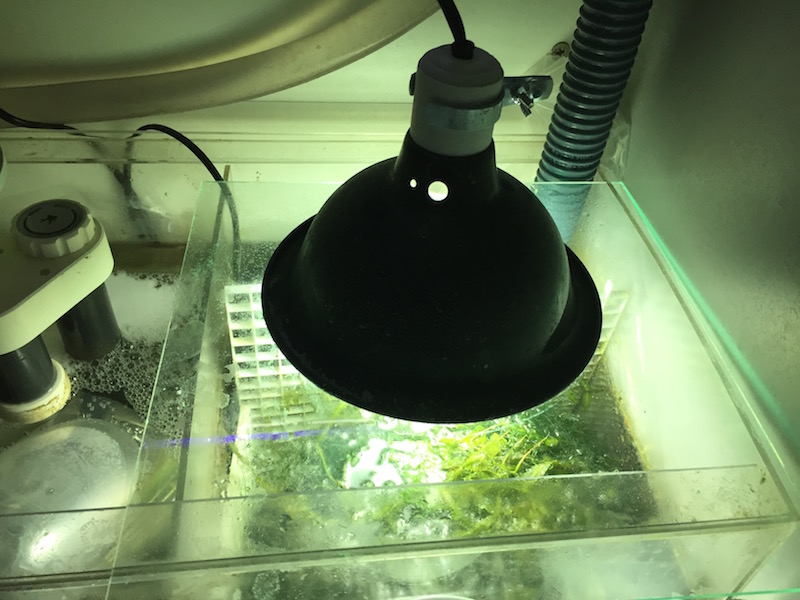
A thriving refugia can also help to maintain a higher pH in the display tank than would be the case when no algae are present. This may be true, but the lighting of the refugia needs to be managed properly for this to occur. Otherwise, it will at best help to stabilize pH or at worst cause it to drop. Over the years I have seen refugia of all sizes with some containing organisms far different from what are usually seen. On one system containing a large number of angelfish and live rock, no corals, the refugia was filled with Tridacna clams housed under bright light. The clams were being used to remove the excess ammonia produced from the large number of fish. They were actually quite effective and the display of them was quite interesting.
For similar reasons, another tank I saw, used a refugia filled with common brown Xenia to help remove excess nutrients. It too was interesting to view with the thousands of polyps it contained pulsing as they filtered the water. As interesting as these were, the most interesting refugia I saw was completely different in that it was not lit at all, actually, it was blacked out so that it did not receive any light, and instead of Caulerpa or other light-loving organisms, it contained a wide variety of sponges. These sponges were used as a means for mechanically filtering out as much detritus and organics as they could, so the material that usually breaks down to produce nutrients was instead consumed before it could do so. This too was a very efficient method of filtration.
Pests
While there are many benefits of having a refugia, there can also be some negative aspects as well. First, while a refugia can be a breeding ground for many good things it can also be the breeding ground for some negative animals as well, including some animals that while not present in the tank due to predation will still grow and thrive in the refugia. These pest animals include aiptasia and majano anemones, fire worms, vermetid snails, and pest amphipods and copepods. When these pests are seen especially when they are first seen they need to be removed before the population takes off.
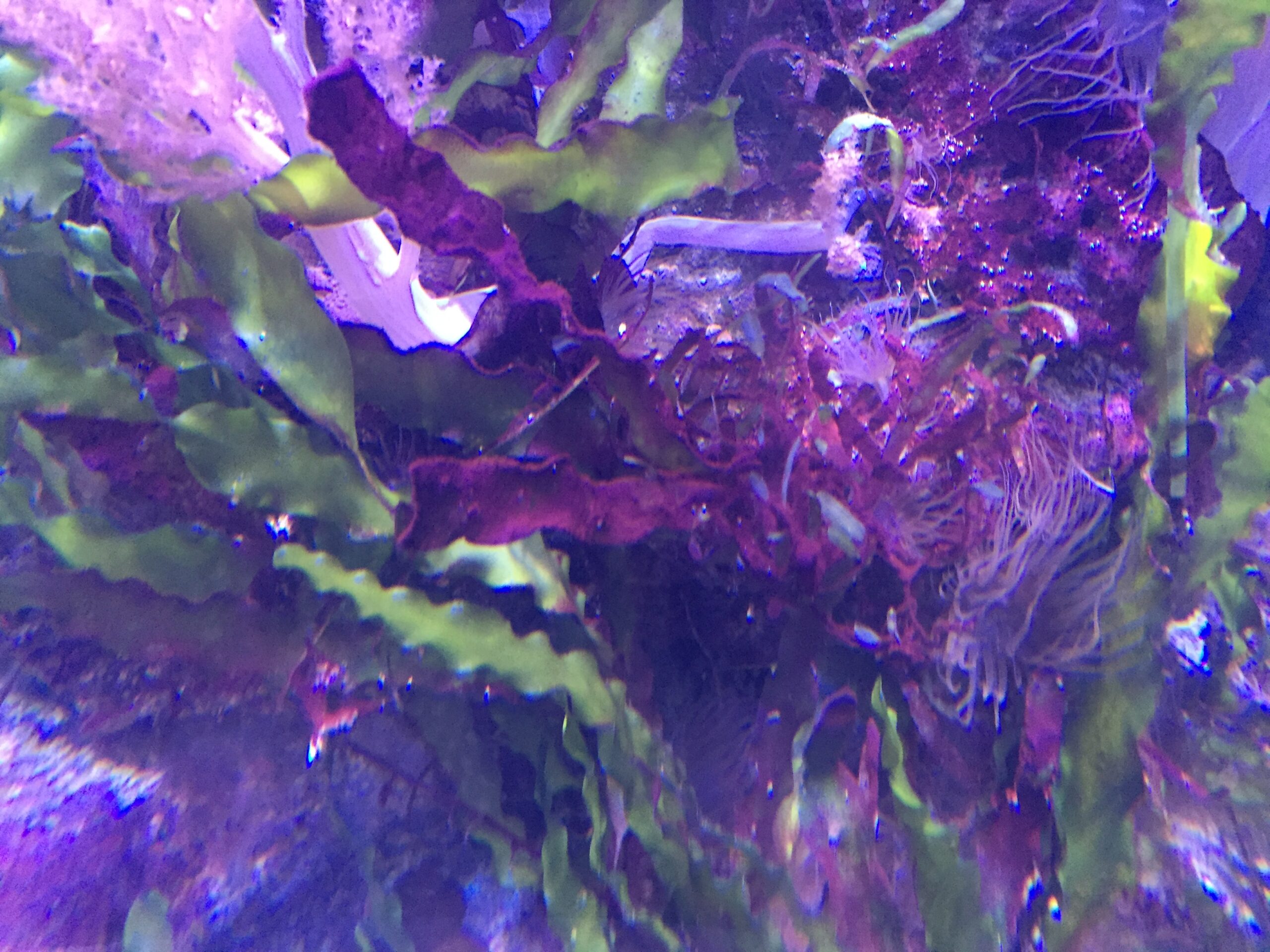
In addition to the possibility of growing these pests a refugia can also be problematic if power is lost for any length of time and hence the flow in the refugia is stopped. When this occurs a refugia, especially one containing mud or live sand or any substrate can go anoxic, or if the power is off a long time anaerobic. When this occurs and the power returns it can wash the poorly oxygenated water back into the display tank causing issues. For this reason, planning should be done to make sure that there is some flow in the refugia should the power go out. Lastly, if the Caulerpa are allowed to grow too profusely they can remove too many nutrients from the water and starve the corals. For this reason, the Caulerpa needs to be managed, it cannot just be a set-and-forget situation.
Adding a refugia to a system can provide many advantages to a tank when done correctly. While it does require some extra planning and equipment in the long run it is my opinion that it is a real benefit to have one on virtually every reef tank. And when planned for properly and managed even the potential shortcomings can be managed readily.


